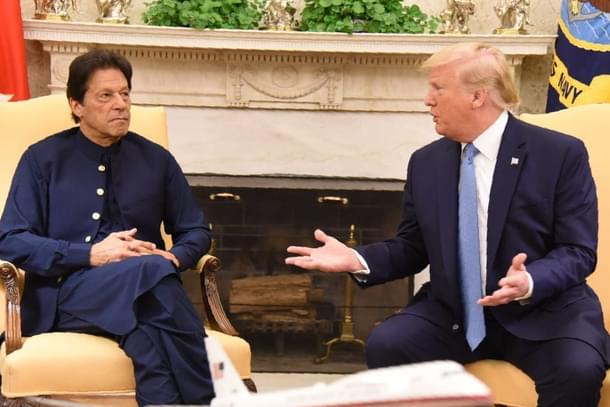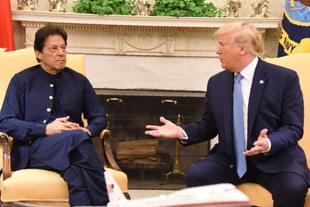World
US Exit: Pakistan Will Gain In Short Term, But Afghanistan-Pakistan Rivalry Will Return In Medium Term
Anil Athale
Aug 09, 2019, 01:11 PM | Updated 01:11 PM IST
Save & read from anywhere!
Bookmark stories for easy access on any device or the Swarajya app.


The psychological effects of military action are barely understood. It is doubtful if the Americans have factored in the psychological effect of the American withdrawal from Afghanistan on the worldwide ‘jihadi’ movement.
Whether honourable or otherwise, the US withdrawal will be seen as a victory of jihadi Islam over the ‘sole’ superpower, and could stoke more terror attacks worldwide and possibly in India.
It will be a big morale booster after setbacks like the killing of Osama Bin Laden by the American ‘intrusion’ into Pakistan in 2011. Even Pakistan will not be immune to it.
Many in India, especially the diplomatic types, have been dismayed at the recent turn of events in Afghanistan. President Donald Trump’s U-turn on Pakistan in order to seek an ‘honourable’ exit from Afghanistan, India’s exclusion from the conference on that hapless country’s future, and the likelihood of the Taliban coming to power are all seen as indicators of the failure of Indian policy in Afghanistan.
The situation looks ominously like the 1990s, when the Taliban killed then Afghan president Mohammad Najibullah and over-ran that country.
In some respects, the situation is even worse. At that time Russia, Iran and India came together and helped the ‘Northern Alliance’ comprising mainly Afghans of Tajik and Uzbek descent, and Shias to offer resistance to the Taliban.
In 2019, the Russians seem no longer interested in opposing the mainly Pakhtun-based Taliban.
Anticipating a surge in terror attacks in India and the American policy of ‘benign neglect’, India has pre-empted the pressure on Kashmir by junking Article 370 and bifurcating Jammu and Kashmir.
More than the ‘real’ change (since Article 370 had already been diluted over time), it has signalled the Indian ‘resolve’ to deal with twin threats of terrorism and Kashmiri separatism. In a sense, Article 370 can be seen as an early fallout of the planned US withdrawal from Afghanistan.
Superficially, the situation in Afghanistan does indeed look like the bad old days of the 1990s, when a fundamentalist regime in Kabul ousted Indians and began giving shelter to Kashmiri militants. Pakistan can now turn the tables on India and claim that the Kashmiri militants are supported not by them but the Afghans.
As a part of Afghan deal, the US has reverted to its old policy of arming Pakistan. Thus, the edge enjoyed by India in conventional power could be under threat, as also a Balakot-type response to terror attacks.
If US were to gift the heavy equipment and arms left over in Afghanistan to Pakistan, since taking them back to the US would be prohibitively expensive, then it will put new strains in the India-US alliance. The gifting of tanks, armoured personnel carriers and heavy guns to Pakistan will fuel a new conventional arms race in the subcontinent.
However, is this reading of the situation right?
In the short term, the answer is a yes, what with a US President, who is incapable of differentiating between Kashmir and kebabs. But it is not fair to blame Trump alone, for this has been part of the long-held US wish-list on disengaging from Afghanistan and mediating in Kashmir, including when Barack Obama was president.
In the short term, the entire scenario painted above could run to script.
In the medium to long term, however, the situation is likely to be very different. There are enough straws in the wind to show that a Taliban takeover in Afghanistan will pose the greatest danger to — hold your breath — Pakistan!
Recently, at the cricket World Cup, there were clashes between Afghans and Pakistanis. The Afghans taunted the Pakistanis as ‘Ranjit Singh ke aulad’. The Afghans made fun of the Pakistani practice of naming their missiles after Afghan ‘heroes’ like Mohammad of Ghazni, Mohammad Ghori and Abdali.
Afghanistan-Pakistan watchers like this author recall how the Afghan Taliban regime in the late 1990s began to show disdain for Punjab-dominated Pakistanis. Once secure and strong in Kabul, the Taliban are bound to question the injustice of the ‘Durand Line’ that gave the Pakhtunistan province to Pakistan.
The Pakistani Army has been carrying out a ruthless campaign of subjugating the Waziristan tribal areas. The use of tanks, guns and even fighter aircraft has been common.
Pakistan has maintained total secrecy about the civil casualties in these areas. The anger of the Waziris and Mehsuds has often boiled over in attacks like the one on the Peshawar school in December 2014.
Even by dismal south Asian standards, killing of over 150 schoolchildren was surely one of the worst kinds of terror attacks. In a heavy-handed response to these attacks, Pathans and other tribals have often been singled out for torture and arrest in the rest of Pakistan.
This long simmering discontent has given rise to the PTM, or Pakhtun Tahafuz Movement. PTM is a mass movement of all Pathan tribes to seek justice.
Given this background, it is only a matter of time when the triumphant Taliban government in Kabul raises the Durand Line issue. Irrespective of its Islamist ideology, it will then find an ally in India to balance Pakistan.
The goodwill India has earned in Afghanistan with its civil works, hospitals and roads will be its assets. In any case, Indian ‘soft power’ has made great inroads into Afghanistan, including the Taliban.
After the initial euphoria over obtaining ‘strategic depth’ in Afghanistan, Pakistan will have to brace itself to face an aggressive Afghan regime. Chanakya’s often quoted formulation, that the "neighbour’s neighbour is a potential friend", holds good even in the twenty-first century.
In the meanwhile, India must hold fast, concentrate on building its own strength and stop relying on others for its security. It is time to grow up.
Col (Retd) Anil Athale is a military historian.





